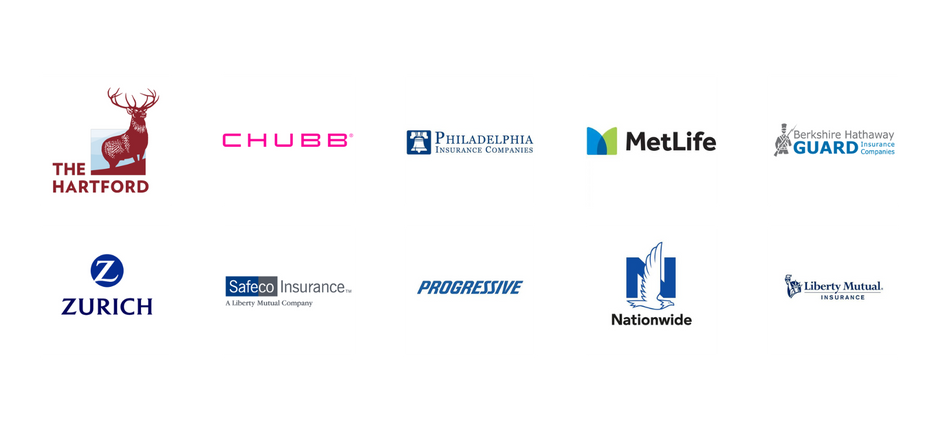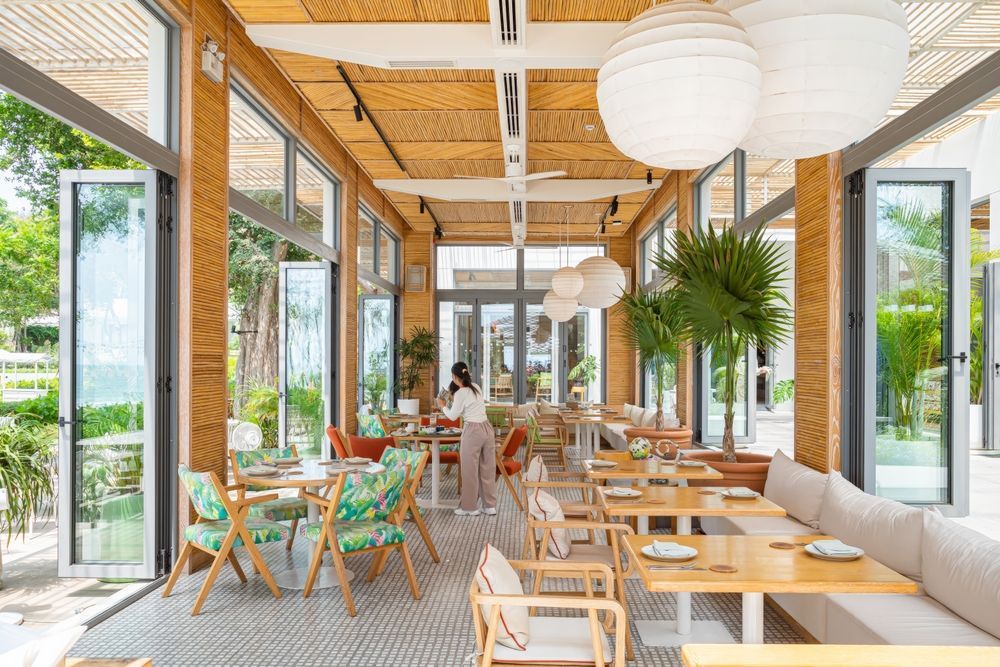By Amelia Manzoor
•
May 13, 2025
Running a restaurant involves a lot of moving parts, from the kitchen to the front of the house, and everything in between. With so much to manage, one of the most important yet often overlooked aspects is your restaurant's workers' compensation insurance. As a restaurant owner, you must ensure that you’re not only compliant with the law but also paying reasonable rates for the coverage you need. Workers' compensation insurance is crucial to protecting your business and your employees in case of injury or illness on the job. However, the rates for workers’ comp insurance can vary greatly depending on a number of factors, many of which are within your control. With the next quarter quickly approaching, it’s important to act now to lock in lower rates for your workers’ comp insurance. Here’s how you can do it. Understanding Workers' Compensation Insurance for Restaurants Workers' compensation insurance is mandatory in most states and covers the cost of medical bills and lost wages if an employee is injured or becomes ill while working. For restaurant owners, workers' comp is especially important due to the inherent risks involved in the hospitality industry. Whether it's slip-and-fall accidents, burns from hot surfaces, or injuries from handling sharp knives, restaurant workers are exposed to a variety of risks on a daily basis. However, the cost of workers' comp insurance can be significant. The premiums are typically determined by factors such as the type of business you run, the number of employees, the safety record of your restaurant, and the claims history. Understanding how these factors affect your premiums is key to managing costs and locking in lower rates before the next quarter. Evaluating Your Restaurant's Risk Profile The first step in securing lower workers' comp rates is to thoroughly evaluate your restaurant's risk profile. Insurers calculate premiums based on how risky your business is perceived to be. For restaurants, this means examining the specific hazards your workers face. For example, if you operate a high-end fine dining restaurant with a lot of kitchen staff, the risk profile could be higher than that of a small, casual eatery where there are fewer employees handling less hazardous equipment. You should also take into account whether your restaurant serves alcohol, as this can increase the potential for accidents. Additionally, consider your restaurant’s location, employee turnover rate, and hours of operation. The more risk factors you can identify and address, the better chance you have of reducing your premium. Implementing a Comprehensive Safety Program One of the most effective ways to reduce workers' comp rates is by implementing a comprehensive safety program in your restaurant. Insurance companies want to see that you are taking proactive steps to mitigate risk. A restaurant that prioritizes safety is less likely to experience workplace accidents and injuries, which can help lower your premiums. Start by conducting a thorough safety audit of your restaurant. Identify common hazards such as wet floors in the kitchen, improper storage of hazardous materials, or inadequate training in handling kitchen equipment. Once you've identified potential risks, create a detailed plan to address them. This could include installing anti-slip mats, providing fire safety training, and ensuring all staff are properly trained in safe kitchen practices. Additionally, make sure you’re keeping up with all relevant local, state, and federal safety regulations. Not only does this reduce the likelihood of accidents, but it also helps improve your reputation with insurers who see that you’re dedicated to maintaining a safe environment for your staff. Training and Educating Your Employees Employee training is another key factor in reducing workers' comp rates. It’s not enough to just implement a safety program; you must ensure that all your employees understand the importance of following safety protocols. Regular training sessions can significantly reduce the risk of accidents and injuries. Focus on training employees in proper lifting techniques, the use of kitchen equipment, how to handle slippery surfaces, and emergency protocols. The more educated your staff is on safety matters, the less likely they are to suffer injuries on the job, which can directly impact your workers' compensation premiums. In addition to safety training, consider offering wellness programs to promote employee health and well-being. Healthy workers are less likely to get injured or fall ill, reducing your risk and helping you keep your rates low. Wellness programs could include stress reduction workshops, exercise programs, and ergonomic workstations designed to reduce strain. Reducing Employee Turnover and Improving Employee Retention Employee turnover is a major factor in workers' comp insurance rates. High turnover can lead to increased training costs and a higher likelihood of workplace accidents, both of which can drive up insurance premiums. Reducing turnover can help keep your insurance costs down. There are several strategies you can use to improve employee retention in your restaurant. Start by fostering a positive work environment where employees feel valued and respected. Offer competitive wages and benefits, and provide opportunities for career advancement. A motivated, long-term workforce is less likely to experience injuries, reducing the need for workers' comp claims. In addition, maintaining a stable workforce means fewer new employees who may not be familiar with your safety protocols. By reducing turnover, you can also ensure that your safety training is more effective, as experienced employees are more likely to follow procedures consistently. Maintaining a Clean and Safe Workplace Keeping your restaurant clean and organized is a simple but often overlooked way to lower workers' comp rates. A cluttered, disorganized workplace increases the likelihood of accidents such as slip-and-fall incidents, which are common in restaurants. Regular cleaning schedules should be implemented, and proper maintenance routines should be followed for all equipment. Additionally, ensure that all areas of your restaurant are well-lit and that walkways are clear of any obstructions. By taking these small steps, you create a safer working environment, which can result in lower workers' comp premiums. Reviewing Your Claims History Your claims history plays a significant role in determining your workers' compensation rates. If your restaurant has a history of frequent claims, you’re likely to pay higher premiums. On the other hand, a history of few or no claims can help reduce your rates. To improve your claims history, consider working with your employees to handle minor injuries in-house without filing claims. This might include treating small cuts or burns on-site or offering employees access to health care providers who can address injuries without resorting to formal claims. However, be careful not to withhold necessary medical treatment in the process, as this could cause complications in the long term. Additionally, if your restaurant has experienced several claims in the past, now is a good time to take a hard look at your risk management practices. Identifying trends in your claims history can help you pinpoint areas for improvement, whether that’s offering better training or addressing specific hazards in the workplace. Choosing the Right Workers' Comp Insurance Provider Choosing the right workers' compensation insurance provider is crucial when it comes to locking in lower rates. Different insurers offer different pricing models and coverage options, so it’s important to shop around and compare quotes. However, price should not be your only consideration. Look for an insurer that has experience in the restaurant industry and understands the unique risks you face. A specialized insurer may be able to offer more competitive rates or tailored coverage options that better suit your needs. Additionally, some insurance providers offer discounts for businesses that implement strong safety programs or have a history of low claims, so be sure to inquire about any available discounts. Work with your insurance broker to negotiate the best possible terms. A broker can help you navigate the complexities of workers' compensation insurance and ensure that you're not overpaying for coverage. Be transparent with your broker about your restaurant's risk profile, claims history, and safety measures to ensure you get the most accurate quote. Reviewing Your Payroll and Classifications Your workers' compensation premiums are also determined by your payroll and employee classifications. Restaurants typically have different classifications for different types of workers, such as servers, kitchen staff, and managers. The risk associated with each classification can vary, and your premiums will reflect those differences. Take the time to review your payroll and employee classifications to ensure they are accurate. If you have employees performing multiple roles, make sure they are classified correctly. Misclassifying employees can lead to higher premiums, so it’s important to regularly audit your payroll and adjust as necessary. If your restaurant has grown or changed its operations, you may need to update your worker classifications to reflect these changes. For example, if you’ve added delivery drivers or expanded your catering services, these changes may impact your workers' compensation rates. Locking in Lower Rates Before the Next Quarter To lock in lower workers' comp rates before the next quarter, it’s essential to act quickly and proactively. Begin by assessing your restaurant’s risk profile, implementing safety protocols, and reviewing your claims history. Work on reducing employee turnover and improving employee retention, as this will have a positive effect on your premiums. You should also take the time to review your current workers' compensation policy, shop around for the best insurance provider, and ensure that your payroll and employee classifications are accurate. By doing so, you’ll be in a strong position to negotiate lower rates and secure the best coverage for your restaurant. Finally, consider scheduling a meeting with your insurance broker or agent before the next quarter to review your policy and make any necessary adjustments. By locking in lower rates now, you can avoid overpaying for coverage and ensure that your workers’ comp insurance remains affordable and comprehensive as you head into the next quarter.





















